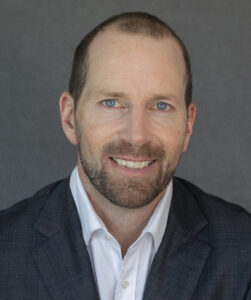TAL’s Jason Bamford reflects on how advice businesses and new entrants to the financial advice community can collectively obtain the maximum benefits from the new Professional Year requirements – a process with which many advice practices are either unfamiliar or are still finding their way…
For new and up-and-coming financial advisers entering the industry, the Professional Year aims to provide a structured mentoring program to help develop the practical, professional competencies that candidates have gained through their prior study.
While this type of guidance has been provided in the past, it has not typically had the structure and regime of the Professional Year. The standards were ultimately introduced to build consumer trust and confidence in advice, and the program recognises the vital role that supervision plays in the development of new advisers.
Many practices can be unsure of where to start with the Professional Year – it can be difficult to find enough time to plan out the year, and the time for the additional capacity to support new entrants. These challenges present us with an opportunity as a profession, to be more forward-thinking with career development and progression.
Here are some tips for getting the most out of the Professional Year that could help advisers realise the benefits and embrace the consistent skills and expertise that come with the mentoring program.
- Remember that this is a mutually beneficial partnership
As with all good relationships, the ability to build and maintain strong partnerships requires mutual respect and a value exchange.
From an adviser supervisor’s perspective, the Professional Year provides an opportunity to build coaching skills as well as support growth of the industry. While a mentor is providing invaluable training around the fundamentals of advice and often on skills around running a small business, the mentor also learns from the candidate. The benefits of someone new coming in with a fresh perspective, asking questions, and sharing their life experience can go both ways.
While the benefits for future advisers of having exposure to doing the actual work and learning on the front line are obvious, there is also benefit to the practice when there is an opportunity to restructure working time. This can allow more time to be spent with clients, or on other tasks that may previously have been deprioritised.
If those candidates can demonstrate reliability and willingness to learn, there is also the potential for practices to identity talent and make the Professional Year just one part of the development process.
- There’s no such thing as ‘too many questions’
Getting the most out of the Professional Year means learning as much as possible from the experiences of others, while also leveraging the structure of the program.
Asking questions and requesting feedback on any tasks done are good ways to encourage interaction and helps build understanding.
Question-asking and critical thinking are closely aligned and having persistent inquisitiveness demonstrates a willingness to learn and desire to engage – and this can lead to inventive ideas and solutions.
- Don’t think of it as a tick the box program
Concerns have been raised within the industry that the Professional Year is administratively burdensome and can act as a barrier. For me, the biggest benefit is that it ensures all new entrants have access to a mentor and can learn through the supervisor.
It’s important to focus on the goal of the PY program when these concerns arise. The regulation calls out the progression within client appointments and it is this exposure that can help make sure there is the right development in place. A client seeking a financial adviser can feel more confident that they will be guided by qualified and capable specialists who have completed years of education, meet the high professional standards of the industry, and comply with rigorous legal requirements.
Many other occupations have benefited from having professional benchmarks in place and having a pathway where people can progress and specialise – and the financial advice profession shouldn’t be any different.
- Look for opportunities to diversify your experience and knowledge sources
Where possible, it’s in the future adviser’s best interest to learn from different advisers rather than restrict themselves to learning only from a primary supervisor.
This is especially true when there are various areas of speciality, so that they can learn from different perspectives to broaden knowledge.
In addition to this, the importance of exposure to client meetings and having the time to talk to the strategy after these sessions should not be underestimated. Looking to be involved and have exposure to as many different clients and at different advice stages helps deliver the real-world experience that the Professional Year is designed for.
Alongside experienced advisers guiding new advisers, the TAL Risk Academy provides a program of training to cover the education and training requirements of the Professional Year and to help complement existing training plans.
In collaboration with licensees, the TAL Risk Academy team has developed a digital platform, ‘PY Manager’, to help advisers navigate the Professional Year and hopefully ease the administrative burden. The platform is aimed at providing both new and existing advisers, supervisors, and licensees with a management system that makes the Professional Year easier by incorporating planning tools, a dashboard, and diarises key checkpoints and milestones.
Back to Adviser Focus Main Page…








